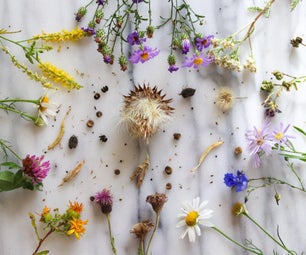Introduction: Home-made Insect Hotel for Solitary Bees. Repurposed Wood. Part 1 'The Chalet'. Hotel a Insectes.
Simple to make, a practical and aesthetically pleasing addition to your own garden or made and given as a gift. This project is ideal for children when presented in kit form, with the more tricky cutting and drilling already completed.
There are over 200 types of solitary or Mason bee and Worldwide they are responsable for pollinating most of our fruit and vegetables. Due to loss of habitat, coupled with the use of pesticides, their populations are in decline. Insect hotels provide a safe, warm and cosy environment for solitary bees to spend the Winter in hibernation. Happily this will then lead them to stay on into Spring and turn your chalet into a honeymoon hotel with the chance of a permanent occupancy and more bees.
For information and help with finding, choosing, transporting and dismantling pallets:
http://thegreenlever.blogspot.fr/2011/11/how-to-collect-pallets.html
http://thegreenlever.blogspot.fr/2011/11/few-guidelines-for-collecting-pallets.html
using and working with natural paints and pigments:
http://thegreenlever.blogspot.fr/2012/02/using-natural-earth-and-mineral.html
Public Domain Music from 'A Tiny Window' http://archive.org/details/SecondJamWithMarkHewins
and also at: http://soundsfromthespring.blogspot.fr/
Facile - Rapide - Bois de Recup - Sympa
Il existe plus de 200 types de abeille solitaire et dans le monde, ils sont responsable de la pollinisation de la plupart de nos fruits et légumes. En raison de la perte d'habitat, couplée à l'utilisation des pesticides, leurs populations sont en déclin. Les Hôtels à insectes fournir un environnement sécuritaire, chaleureux et confortable pour les abeilles solitaires pour passer l'hiver en hibernation. Heureusement, ce sera alors les amener à rester sur place en printemps et tournez votre chalet dans un hôtel 'lune de miel' avec la possibilité d'une occupation permanente et encore d'abeilles.













